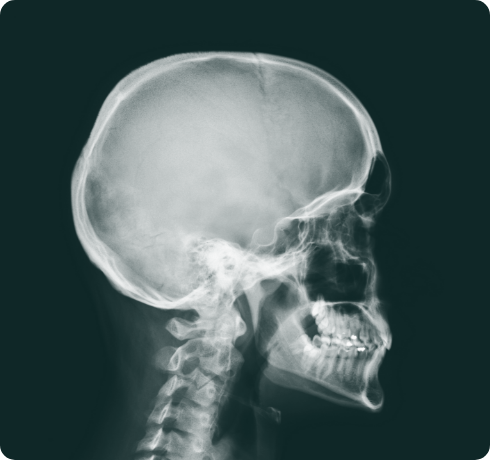
Featured Case Study
A Brief History of Virtual Reality (VR)

At the heart of virtual reality is the idea of being somewhere without physically being there. This notion has sparked human imagination for hundreds of years. Today’s real world virtual technologies are built upon ideas that date back to the 1800s near the very beginning of practical photography. The first stereoscope was invented in 1838 and it’s twin mirror arrangement served as the foundation for the View-Master, patented in 1939 and still in production today.
From Science Fiction to Reality
Early mention of something akin to virtual reality is made in a short story by science fiction author Stanley G. Weinbaum. Published in 1935, Pygmalion’s Spectacles involves a professor who invents a pair of goggles that allow him to view a movie with sight, sound, taste, smell, and touch.
Credit for extrapolating this idea into the real world goes to Morton Heilig, a cinematographer, who, in 1957, launched his Sensorama, a multimedia device which simulated a real city environment. Viewers ‘rode’ through the virtual environment on a motorcycle. Multisensory stimulation made it possible for them to see the road, hear the engine, feel the vibration, even smell the motor’s exhaust in the artificially designed world. Interestingly, this was an entirely mechanical apparatus as it pre-dated digital computers.
In 1960, Heilig patented a head-mounted display device he called the Telesphere Mask which served as the foundation upon which many subsequent VR helmets were built.
Steady Progress through the 1960s
The world’s first motion-tracking head-mounted display (HMD) was created in 1961 by Comeau and Bryan, two Philco Corporation engineers. The display had two video screens, one for each eye and a magnetic tracking device which was used to move a remote camera, allowing the user to look around a physical environment without actually being there.
In 1966, Thomas Furness, a military engineer, invented the first flight simulator for the Air Force which sparked a great deal of interest in VR technology and its application in training situations.
The first VR/Augmented Reality (AR) HMD to produce immersive experiences was invented by Ivan Sutherland and Bob Sproull in 1968. This device displayed computer-generated graphics that changed perspective as the user moved around. Both the quality of the interface and realism of the simulations were rather low, and the device, known as ‘The Sword of Damocles’ was so heavy that it had to be suspended from the ceiling by metal cables.
Rapid Advances in the 70s and 80s
The 1970s and 80s brought scientific breakthroughs in optics, haptic devices and instruments that allowed users to move around in the virtual space, ushering in a golden age for virtual reality.
Although the focus during this era was on medical, flight simulation, automobile industry design, and military training, the 1982 box office hit, Tron, raised public awareness of and interest in virtual reality.
Meanwhile, Furness continued to work on his Air Force simulation project and, in 1986, developed the Visually Coupled Airborne Systems Simulator (VCASS) that gave pilots a virtual view, streamlining the barrage of information they are expected to absorb.
VCASS led to the invention of The Super Cockpit program that uses technology such as computer-generated 3-D maps, infrared, and radar imagery to help pilots make better decisions, faster.
VR Goes Mainstream
The term virtual reality was first coined in 1987 by computer scientist, researcher, and artist John Lanier who founded the Visual Programming Lab (VPL).
Alongside Tom Zimmerman, Lanier also developed a range of VR gear, including the Data Glove, the Audio Sphere and the EyePhone HMD which set VPL up as the first company to sell VR goggles.
When VPL licensed the Data Glove to Mattel, they created the Power Glove. At $75, this was one of the first affordable VR devices readily available to the general public.
Boom in VR and AR in the 90s
In 1991, the first cubic immersive room, known as the cave, was developed by PhD student Nicole Stenger. This multi-projected environment allowed users to see their own bodies in relation to others in the same space. Stenger went on to create the first real-time immersive movie, experienced using data gloves and high-resolution goggles. The first commercial releases of consumer headsets that occurred in the 90s were, in large part, due to these breakthroughs.
Sega released its VR headsets for arcade games and the Mega Drive console in 1991, followed by the Sega VR1-motion simulator arcade attractions which tracked head movements in 1994.
Nintendo’s Virtual Boy launched in 1995 as the first portable console that could display 3D graphics, but it was a bit of a fizzle due to its expensive price tag of $180, the lack of colour graphics and poor software support.
In 1997, Georgia Tech and Emory University researchers developed Virtual Vietnam, a virtual reality war simulation used to assist in treating veterans suffering from PTSD.
VR Innovation Continues to Grow in the 21st Century
Progress in the field and application of VR continues to grow at a rapid rate in the 21st century.
On 14 April 2016, cancer surgeon Shafi Ahmedon performed the first surgery ever to be recorded by virtual reality cameras at the Royal London hospital. These types of recordings allow medical students to follow the operation from start to finish as though they were holding the scalpel.
2016 was also the first year that VR became truly accessible to consumers with the release of HTC Vive, Oculus Rift and Playstation VR making it possible to enjoy VR gaming and media entertainment in the comfort of one’s home. Since then, the industry has continued to grow exponentially.
No Slowing Down
As impressive as it may currently appear, VR is a rapidly advancing technology and it’s development shows no signs of slowing down. With more powerful, more streamlined headsets, and more intuitive and innovative software coming out each year, only one thing is certain, we’ve only just begun to unlock the full potential of this powerful technology.
If you would like to find out more about Medical Imaging Virtual Reality Environments, please reach out to our friendly team today.
Check Out More Articles

Let use medspace.VR give you that advantage
Whether you are an institution or a student, medspace.VR is designed to help. Begin the process today.
Enquire Now

